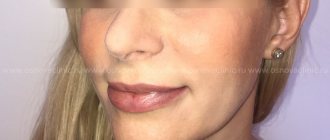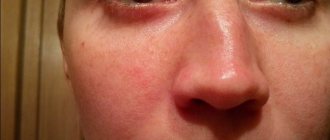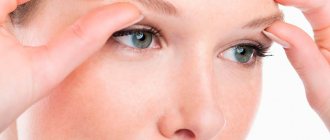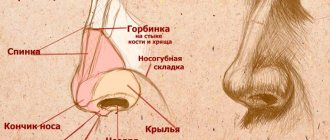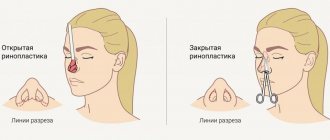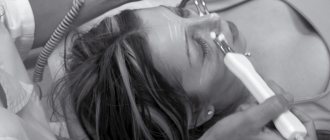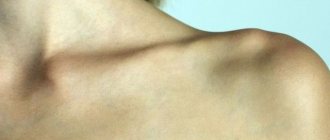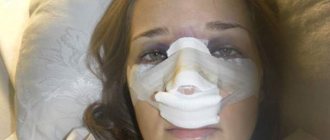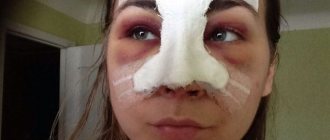Any surgical operation, unfortunately, has a risk of undesirable consequences and side effects, and rhinoplasty in this case is no exception. Knowing and predicting possible complications helps the surgeon make the right decision at the time of their occurrence and choose the necessary treatment for the complete recovery of his patient.
According to medical observations, the incidence of complications after rhinoplasty varies from 4 to 18.9% of cases. And in this regard, it is extremely important to note: the more experienced the doctor, the lower these numbers are found in his medical practice. Tigran Albertovich Aleksanyan is convinced that a responsible and correct choice of your plastic surgeon helps to further minimize the risk of any complications after operations. Today, in clinics and plastic surgery centers, rhinoplasty is considered one of the most popular and financially attractive operations and, unfortunately, specialists of various levels of training undertake it. This is why it is very important to find a surgeon with extensive experience and in-depth knowledge, such as Dr. Aleksanyan.
Causes of possible complications
In rhinosurgery, there are conventionally three possible factors that provoke complications after rhinoplasty. It is not difficult to guess that the first is precisely the wrong choice of the surgeon, his little experience or repeated unsuccessful practice of nose correction. It is important to understand that only a first-class specialist, from among the many methods of nasal reconstruction, will be able to individually select exactly the one that will give the desired aesthetic result and reduce the risk of complications. The second factor is associated with the patient’s irresponsible behavior during rehabilitation, his failure to comply with medical recommendations and skipping scheduled examinations. It is during the early recovery period that a set of treatment and preventive measures is carried out to prevent postoperative consequences and improve treatment results. The third depends on the characteristics of the patient’s body and possible reactions to surgery. This factor sometimes causes unexpected and unpredictable side effects.
Indications for surgery
A snub nose can be either a congenital defect or acquired as a result of traumatic injuries or unsuccessful plastic surgery. The upturned effect can cause not only aesthetic, but also physiological discomfort. General indications for correction are as follows:
- Various physiological problems in the nasal area: difficulty breathing, constant congestion and others.
- Tip raised up.
- Wide nostrils.
- A sharp transition from the back of the nose to the tip.
Classification of complications
When surgically correcting nasal deformities, complications can arise not only during the operation, but also after its completion.
Complications of the operating period:
- Rhinoplasty may be accompanied by bleeding, which can almost always be stopped with the help of tampons or hemostatic sponges. In order to reduce the severity of bleeding, Tigran Albertovich performs careful skin detachment and careful homeostasis during the operation itself. In addition, to prevent bleeding, Dr. Aleksanyan carefully examines patients, collects a detailed history and pays special attention to the condition of the blood coagulation system. In some cases, it is impossible to do without a consultation with a hematologist, during which the specialist will determine whether the patient has coagulopathy (blood clotting disorder) and what nature is it - hereditary or acquired? At the stage of preparing the patient for the upcoming rhinoplasty, the prescription of drugs that strengthen the vascular wall and improve the functioning of the blood coagulation system is necessarily included. Homeostatic post-operative therapy is carried out for several days after rhinoplasty, and blood pressure is monitored along with it.
- Perforation of the skin and mucous membrane when they are detached from supporting structures is one of the undesirable complications of rhinoplasty. Most often it occurs in cases where the nose has been previously injured or has already been operated on. To avoid tissue ruptures and damage, Tigran Albertovich takes special care to detach them and carefully monitors the progress of the surgical instrument.
Complications of the postoperative period:
- Edema is the most common and, one might say, obligatory complication of rhinoplasty. They can be initial postoperative swelling (those that persist for 10 days) and persistent (up to six months). It should be noted that persistent swelling is not visible to others and does not visually affect the altered shape of the nose. The severity of tissue swelling after rhinoplasty depends on the chosen surgical technique, the set of surgical instruments, the duration of the operation and, possibly, on the excessive number of hemostatic tampons used. To reduce the severity of swelling immediately after osteotomy (dissection of the nasal bones), Dr. Aleksanyan applies a fixing bandage and a cold compress, and places the patient’s head in an elevated position. It must be said that one of the postoperative complications of rhinoplasty - difficulty in nasal breathing - is also associated with the occurrence of initial edema. As soon as the swelling goes away, breathing is restored.
- Hematomas are complications of the immediate postoperative period. Often they are local in nature and form in the area of the bridge of the nose and the back of the nose. They become visible after removing the plaster cast and are dense, limited areas of soft tissue with a pronounced bluish color. Usually their appearance is associated with an incorrectly applied plaster cast, which causes blood to accumulate under the skin in these areas, as well as with the quality of the plaster and the time it takes to harden.
- Infection is a rare complication of rhinoplasty (only 2% of cases), and it can occur if there is insufficient antiseptic treatment of the nasal passages immediately before the operation. In addition, the risk of inflammation occurs with rough surgical intervention, poor sanitation and residual blood clots, wide opening of the nasal cavity, or with rhinoplasty performed in the early stages after inflammatory processes of both a local and general nature. Such complications can be eliminated by prescribing antibiotic therapy and local tissue drainage.
- Redness of the skin of the nose after surgery is rarely observed, but it is not possible to exclude this visible side effect. The doctor can predict such a complication during a conversation with the patient, when it is important to find out whether the patient experiences a sharp reddening of the skin of the nose with a sharp change in air temperature. A more realistic likelihood of this complication occurring is possible with secondary rhinoplasty, which the patient is warned about in advance.
- Another infrequent consequence of nasal reconstruction may be the growth of subcutaneous tissue within the surgical intervention or in the area of cartilage tissue removal. Tissue hypertrophy is usually temporary and, with proper postoperative treatment, disappears within a few weeks.
- Some patients may experience disturbances related to the sense of smell. A short-term and minor disturbance in the sense of smell immediately after surgery is quite normal. It may be associated with several reasons, for example, with initial swelling, with damage to the structure of the neuroepithelium, or with the use of any medications in therapy. In addition, those patients who have a history of facial trauma are more likely to develop this complication during dissection of the nasal bones.
- A local allergic reaction most often occurs in patients with high sensitivity to applied fixing bandages. Such cases are quite rare in the practice of rhinosurgeons. Therapeutic tactics in this situation involve, if possible, removing the bandages and taking antihistamines.
If swelling does not go away for a long time
Sometimes there are situations when changes in tissues remain longer than usual or increase. In these cases, you need to consult a doctor. The time it takes for swelling to subside after rhinoplasty depends on age, tissue characteristics and additional factors that need to be taken into account. During the examination, the doctor will make sure that there are no complications, and swelling and bruising are consequences of the operation, and not additional problems after it. To speed up the healing process, the doctor may recommend local medications (gels, creams) or a course of procedures that improve fluid outflow and microcirculation.
Difficult to predict complications of rhinoplasty
Tigran Albertovich Aleksanyan, during consultations with his future patients, focuses due attention on possible unpredictable and difficult to predict complications, which may be the consequences of an atypical response and reaction of the body to a previously carried out correction. In this case, we are talking about revision rhinoplasty with the formation of hypertrophic, keloid scars, as well as various types of nasal deformities and breathing disorders that arise with them. The latter, in turn, can be associated with the formation of keloids, disruption of blood supply processes and difficulties in tissue regeneration processes.
Very often, the initial result of rhinoplasty is completely satisfactory and pleasing to the patient, but the unforeseen consequences that appear (in the form of the aforementioned hypertrophic scars, keloid scars, deformations of the nasal septum, redness of the skin of the nose, narrowing of the nasal passages, etc.) cause some psychological discomfort and dissatisfaction. These manifestations often coincide with rehabilitation and recovery after rhinoplasty, with a period of routine examinations, during which the surgeon must determine how justified his patient’s experiences are, whether the results coincided with expectations, and how the appearance and proportions of the face have changed.
Obvious experiences are reinforced by visually insufficient or, on the contrary, too radical reconstruction of the initial defects in the shape of the nose, the unattainability of the set goal of improving the patient’s appearance in combination with functional disorders. Groundless and far-fetched experiences are subjective and groundless negative emotions in a patient from rhinoplasty, regardless of how skillfully and professionally the plastic surgeon performed his work. In such cases, a person only needs time and patience to get used to and accept his changed appearance. You need to understand that the operated nose will take its final shape after a fairly long (about a year or more) period of time. But, despite this, many patients are in a hurry and very often make hasty conclusions even before the moment when persistent swelling completely disappears and the healing process is completed.
Medications
To promote the resorption of swelling and bruises, you can apply special ointments to the injured area - “Traumel”, “Badyaga” and so on. If the patient has a fever, the doctor may prescribe antibacterial medications. To relieve acute pain, painkillers are prescribed.
Diprospana injections or compresses with dimexide help relieve swelling. But these procedures are strictly prohibited from being done at home! The slightest mistake in dosage can lead to unpleasant consequences. Therefore, you should never prescribe treatment for yourself. The use of any medications is possible only after discussion with your surgeon.
To relieve facial swelling after rhinoplasty and speed up recovery, additional physical procedures may be indicated - microcurrents, phonophoresis, and the like. The surgeon will also voice this.
Recommendations for preventing complications after rhinoplasty
When planning an operation, the patient must follow some recommendations that will help reduce the risk of possible complications. Here are the main ones:
- 2-3 months before rhinoplasty you should refrain from smoking, since nicotine negatively affects the processes of regeneration and restoration in tissues;
- Before and after surgery, you should not take aspirin or medications containing aspirin that impair blood clotting;
- In the postoperative period, any physical activity and bending the head forward are strictly contraindicated;
- To reduce postoperative swelling, it is recommended to sleep on your back, with the head of the bed elevated;
- For 2-3 weeks after rhinoplasty, you should not visit saunas, baths, swimming pools, or beaches with open access to sunlight; the bandage should always be dry and clean;
- Women should not plan pregnancy in the next 6-12 months.
Special recommendations:
- Within 1-2 weeks after rhinoplasty, it is strictly forbidden to remove the fixing plaster cast, only with the permission of your attending physician.
- It is forbidden to take too cold or hot food and liquid during the first month after surgery;
- You should not wear glasses or blow your nose for 1-1.5 months.
Promising methods for identifying complications after rhinoplasty
The many years of experience of fellow surgeons, the experience of mentors and teachers, daily practice and the doctor’s desire to perfectly master all rhinoplasty techniques significantly reduce in the future the risk of certain complications during the operations he performs. Each time, analyzing the performed rhinoplasty from the anatomical, pathological and psychological aspects, the doctor identifies all possible reasons that led to the appearance of functional or aesthetic discomfort. Only such a thorough analysis helps to improve the technique of rhinoplasty and reduce the number of complications in the future. In addition, innovations in the field of surgical 3D modeling, technological developments in endoscopic rhinoplasty, the quality of materials for implantation and reconstruction - all this ensures the safety of the operation and reduces the risk of undesirable consequences. Dr. Aleksanyan’s excellent experience, thorough knowledge of the stages of rhinoplasty, his skill and ability to predict the situation guarantee excellent prospects and results of rhinoplasty in his daily surgical activities.
© Tigran Aleksanyan 2010-2020. Plastic surgeon in Moscow – personal website.
Rhinoplasty in Moscow
The Multidisciplinary Clinic "MedicCity" offers various types of plastic surgeries: otoplasty, septoplasty, rhinoplasty. The plastic surgeons of our clinic are highly qualified doctors, specialists with extensive experience in the field of aesthetic medicine. If you want to change the shape of your nose, ears, eyelids, or need face and figure correction, our clinic will provide you with highly professional assistance.
1 Rhinoplasty in MedicCity
2 Rhinoplasty in MedicCity
3 Rhinoplasty in MedicCity

